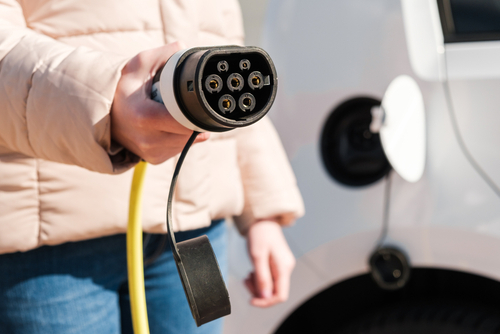Utilities can cover costs of EV infrastructure without raising rates, EDF study finds

Utilities covering the cost of infrastructure upgrades needed for fleet charging can increase their revenue without raising electricity rates, a new report from the Environmental Defense Fund (EDF) revealed.
The analysis, conducted for EDF by Synapse Energy Economics, points out that large-scale electrification of medium- and heavy-duty vehicles is essential for the United States to meet its climate goals. However, this requires grid upgrades to support the added load from charging, and that can account for up to 30 percent of the total “make-ready” cost of charging for fleets.
Most U.S. utilities and regulators have been reluctant to finance these grid upgrades for fear of needing to raise electricity rates to pay for them. However, this new report by EDF debunks that notion.
Using two New York State utilities as case studies — Con Edison and National Grid — the analysis found that if utilities cover the “make-ready” cost for both private and municipal fleets, the investment will pay off for utilities and have a positive to neutral impact on ratepayers in both utility service areas.
“Investing in make-ready programs can benefit fleets, utilities, and consumers,” said Pamela MacDougall, director of grid modernization at EDF. “When paired with clear targets, like the Advanced Clean Truck rule, make-ready investments can help states achieve their climate goals and accelerate the transition to a zero-emission future.”
With managed charging — the practice of aligning EV charging during times when clean, affordable electricity is most abundant — Con Edison’s make-ready program would generate $1.1 billion in net revenue between 2023-2045, while National Grid’s program would generate $141 million in the same period, the study found. And even without managed charging, investing in make-ready programs would have a positive to neutral impact on ratepayers in both utility service areas.
“Con Edison stands ready to accelerate the transition to clean transportation,” said Raghu Sudhakara, Con Edison’s vice president of Distributed Resource Integration. “Infrastructure and make-ready investments not only allow for customers to choose electric transportation and reduce pollution and noise in our communities but will also help in moderating electricity rates in the longer term.”
Currently, large national fleets are prioritizing buying electric medium- and heavy-duty vehicles in areas where they don’t have to pay for grid upgrades. This underscores the role smart utility policies can play in accelerating EV deployment while delivering pollution reduction and economic benefits. Further, as more fleets are incentivized to plug in – thus saving on diesel fuel — utilities can invest a portion of their returns on grid upgrades elsewhere that would have otherwise been paid for by all ratepayers.
In addition, EDF contends that the results can be applied to states across the country due to the nature of the utilities studied. These two New York utilities are at opposite ends of the spectrum regarding grid costs, electricity demand profiles, and region. Con Edison serves New York City, while National Grid serves rural upstate New York.
The Environmental Defense Fund is an international nonprofit that creates solutions to the most serious environmental problems. It has more than 3 million members with offices in the United States, China, Mexico, Indonesia, and the European Union.
